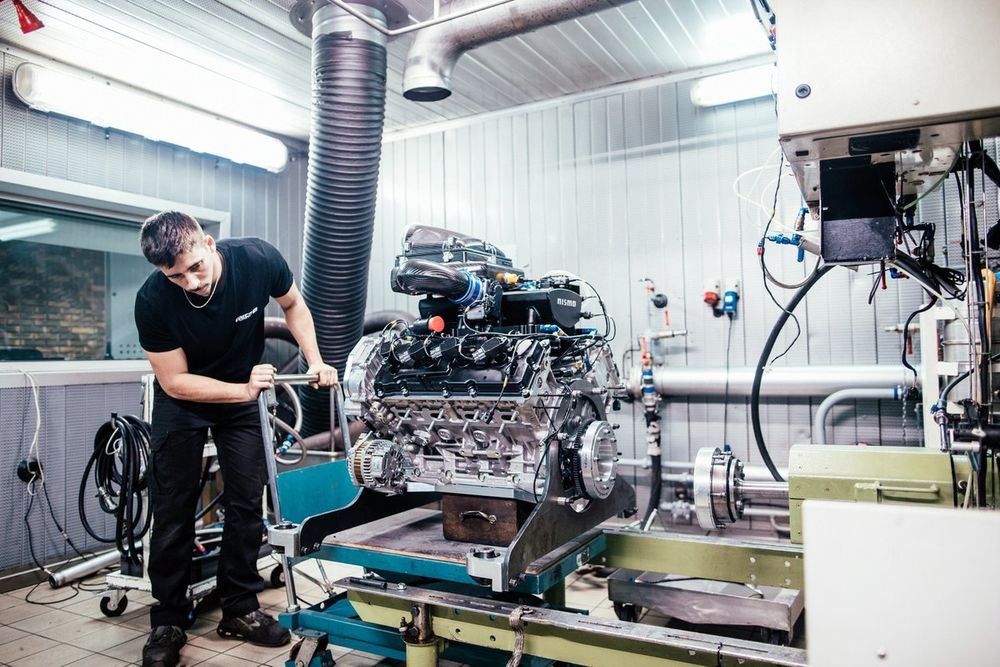
Before I joined ORECA in October 2021, my life was all about Formula 1. So although I knew ORECA as a team, from starting my career here in Le Castellet with Signature in Formula 3, I didn’t have a great deal of insight into the company beyond the fact that its chassis were dominating LMP2 since 2017. Until I started discussions with Hugues de Chaunac in mid-2021, I had no clue on what ORECA was like on the inside or what it would become today.
Two years on, we can say it’s a totally different company. The DNA is the same, but across the whole motorsport activity ORECA has expanded significantly and we’re now twice as many people. Whether Hugues anticipated it would be that big, I don’t know, but he was already clear from our first discussion that he would scale up from Ligue 1 to Champions League.
While continuing with LMP2, we have partnered on LMDh cars with Acura and Alpine. We took over the Ferrari 296 GT3 programme, with the engine division in Magny-Cours we’ve developed two hydrogen combustion engines and moved to strengthen our software development, plus the new manufacturing Technocentre in Signes is close to being completed.
It’s fair to say that ORECA isn’t as known for engines as it is for chassis construction, so we’re trying to make it known that our engine division is at the same level. ORECA has accomplished a lot on the engine side, but it didn’t always get the recognition that the race team or chassis did.
We supplied the LMP3 cars’ common engines, worked with Skoda on the Fabia R5, and entered Dakar several times. Now the hydrogen activity has really shown people what ORECA is capable of doing from scratch. We’re trying to build on this, so potential customers understand that we have the capability to make a complete racing car.
Our initial aim was to have a hydrogen powertrain ready for Dakar 2024 but, although the L4 is running, the platform to receive it is not yet there. We also have some advanced H2 engine projects with OEMs that may cover most motorsport applications, but the technology for storage and distribution of hydrogen still needs some work. Whether you store hydrogen in gas or liquid form, you need to have infrastructure and safety provisions in place which are not the work of a moment.

H2 cars will be eligible to race at the Le Mans 24 Hours from 2026 [although it is likely to be rolled back to 2027-ed], and it could be feasible to be on the grid for the first year. Clearly hydrogen is still an immature technology that requires a lot of investment and, even if ORECA is getting bigger, only an OEM these days is capable to put all this money on the table.
We will need the support from a manufacturer to get into it for 2026 and we’re in talks with different ones, but nothing has been signed yet. So I can’t say now that we will have a car in 2026 on the grid, but there is quite a lot going on to be able to do that.
We’re not setting things up so that ORECA is only capable of making the same car 100 times with the same quality for the right price.
After 50 years, Hugues has been trying to set up the company for the next half century, and having activities across four endurance racing categories gives us the right platform to develop into a manufacturer that is capable of making 100 racing cars per year. At the same time, we’re not setting things up so that ORECA is only capable of making the same car 100 times with the same quality for the right price.
We’ll keep making cars in small volumes that will be capable of winning at Le Mans and Daytona because that’s the main asset from ORECA; being capable of responding to different projects in motorsport and delivering good racing cars. It’s the same story with engines.
The foundations were already in place and now we’ve raised the level again. There is still a lot to do, but there are good signs with customers coming to us, so I feel we’re on the right way for the next 50 years.








